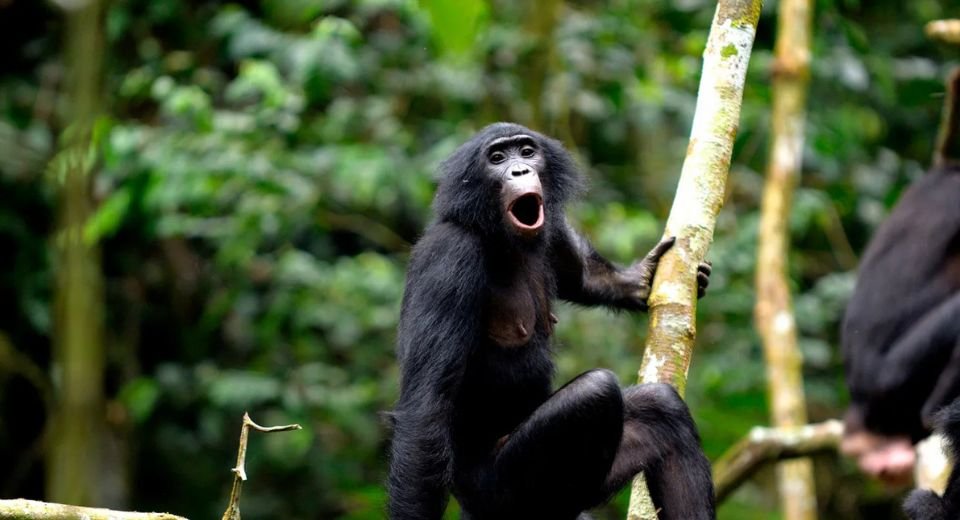HQ Team
May 13, 2025: Bonobos, often called pygmy chimpanzees, use the human equivalent of word compounds and phrasings, allowing Harvard researchers to assemble a “dictionary” on animal communication.
The study details the researchers’ observations of the vocal behaviour of wild bonobos, a key species for reconstructing human evolution, in the Kokolopori reserve in the Democratic Republic of Congo.
Using new methods borrowed from human linguistics, the team demonstrated for the first time that bonobo vocal communication also relies extensively on compositionality.
Like humans, bonobos have complex social bonds. For example, their social group sometimes breaks off into smaller groups before coming together again.
“The social organisation is perhaps possible because of this more sophisticated communication,” said Melissa Berthet, at the University of Zurich, and the lead author of the study.
Compositionality
Humans pair words to make phrases and sentences, and then link these parts into phrases and sentences that define language and their ability to communicate with each other.
This capability, known as “compositionality,” lets humans create new words and phrases.
For example, a “bad dancer” is not necessarily “bad” in any absolute sense. That modifier links with “dancer” to create an easily understandable neologism. Such phrasings can help communicate complex social situations, according to a Harvard statement.
“There’s been a long-held evolutionary relationship between vocal complexity and social complexity,” said Professor Simon William Townsend at the University of Zurich. Humans are proof of that.
“Arguably, humans have the most complex social organisation, and we also have the most complex communication system with the most complex forms of ‘combinator’ reality.”
Frugivorous animals
The dwarf chimpanzees or bonobos in an endangered great ape, distinguished from common chimpanzees by relatively long limbs, pinker lips, a darker face, a tail-tuft through adulthood, and parted, longer hair on their heads.
The frugivorous animals — that survive on raw fruits or succulent produce of fruit-like plants such as roots, shoots, nuts and seeds— are found in a 500,000 square kilometre area within the Congo basin in Central Africa.
The researchers collected data for more than eight months.
They began with a list of roughly 300 contextual features to check off when a bonobo made a sound classified as a peep, yelp, or whistle, and “what they were doing or what was happening.”
These assumed that a call could give an order, such as “Run!” — announce an upcoming action (“I will travel”), express an interior state (“I am afraid”), or refer to an external event (“There is a predator”).
The team recorded what happened for two minutes after each vocalisation to see how that vocalisation influenced the group.
‘Dictionary of sorts’
Not only did various vocalisations link to various acts or occurrences, but strings of vocalisations revealed their meanings, allowing the team to create “a dictionary of sorts,” said Prof Berthet.
The dictionary revealed how many of the call combinations had compositionality recognised from human languages.
“This dictionary represents an important step in understanding animal communication, as it is the first time researchers have systematically determined the meaning of all the calls of an animal,” said Berthet.
Such structured language is not unique to humans and bonobos: Similar combinations have been observed in chimpanzees.
However, that research has tended to focus on single-call combinations, while this new study looked at an entire vocal repertoire.
‘Vocal repertoire’
“The beauty of this approach is that all of a sudden we have something that allows us to quantify these aspects of the vocal repertoire in all different types of species,” said Professor Martin Surbeck of Harvard’s Department of Human Evolutionary Biology.
“It opens a new understanding of animal communication.”
As humans and bonobos share a common ancestor from approximately seven million to 13 million years ago, they share many traits by descent, he said.
“It appears that compositionality is likely one of them.”








